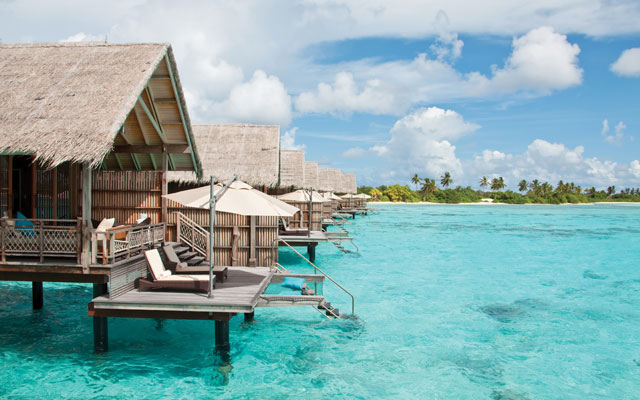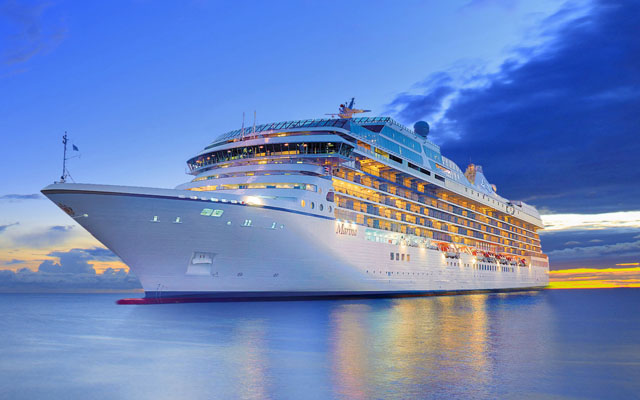When a luxury destination goes downmarket, will a broader audience and brand presence equate to a better bottom line? S Puvaneswary takes this question to the Maldives
The Maldives’ exclusive island resort image is what made it into a premium destination on the international travel scene, but the entry of budget airlines, as well as a surge in budget accommodation options have put the atoll nation within reach of a larger group of travelling masses.
But that consequent rise in tourist arrivals hasn’t eased the oversupply currently grappling the Maldives, which had 28,726 beds in 2016 compared with 25,221 beds in 2010, according to statistics from the Ministry of Tourism, Arts and Culture Maldives.
In 2009, tourist arrivals by air to the Maldives totalled 655,852 and average occupancy stood at 70.2 per cent while the average length of stay was 7.8 days. In 2016, tourist arrivals by air had doubled to 1.3 million but average occupancy rates dropped to 68 per cent; the average length of stay, meanwhile, declined to 5.6 days.
As a result, price wars have become inevitable as the Maldives grapples with a room glut.
Suresh Dissanayake, corporate general manager – sales & marketing, Adaaran Resorts in Maldives, said: “Two years ago, a room in a five-star property in Maldives was sold from US$700 with breakfast. Now, five-star room rates start from US$500.”
Peter Gremes, general manager at Reethi Beach Resort on Fonimagoodhoo Island on Baa Atoll, added: “Christmas has traditionally been a peak season in the Maldives and it was unheard of in the past for hotels to offer discounts. For this year, some five-star resorts are offering up to 20 per cent discounts… and four-star properties that maintain their rates now become more expensive.”
Gremes expects even fiercer competition in 2018. “With more new properties coming up in Maldives, average room rates will drop further. There’s also competition from guesthouses on local islands and from Airbnb,” he said. “Then there’s external competition – destinations such as Phuket, Bali, Hawaii and Mauritius, among others, are also vying for international tourists.”
The government and private sector both realise that the way forward is to increase tourist arrivals to lessen the impacts of oversupply and bring up room rates. However, Shabeer Ahmed, founder of Sunland Group, warns that this must be done gradually instead of aiming at a high level in the short term.

At the Bank of Maldives Hotelier Summit, which was part of the inaugural Travel Trade Maldives event in July, Suresh opined that the Maldives should explore “organising international sporting events and entertainment events as well as using international celebrities” to promote the destination.
But that is easier said than done, countered Ibrahim Asim, director, Maldives Marketing & PR Corporation (MMPRC), largely due to the logistical challenges that organising large events would pose to small islands like Malé. Island resorts also face constraints in limited hotel capacity and transport options to cope with large visitor influx.
To make the Maldives a top of mind destination for international visitors, MMPRC in February launched an integrated marketing campaign, Story of Maldives, for 2017 and 2018. The campaign focuses on emerging trends such as experiential travel, food, cultural tourism and ecotourism, placing a huge emphasis on utilising the Internet and social media to tech-savvy millennials.
The government has also embarked on an ambitious US$800 million mega project to expand and upgrade the Maldives’ main entry point, Velana International Airport. The plans include the construction of a brand-new runway, which can accommodate the world’s largest passenger airliner – the Airbus A380 – when it is operational by mid-2018.
“The runway will definitely be an incentive for bigger and more aircraft to use Velana. As of July 2017, there were 34 airlines flying to Velana,” revealed Lionnel Maugis,” chief development officer, Maldives Airports Company.
More domestic airports are being constructed at farther islands such as Kulhudhuffushi in Haa Dhaalu Atoll, Funadhoo in Shaviyani Atoll, Nilandhoo in Faafu Atoll, and Maavarulu and Faresmaathoda in Gaaf Dhaal Atoll. When these five airports are operational come October 2018, they will improve connectivity from Velana International Airport.
As well, new airlines flying into Malé’s Velana International Airport in the coming months include Alitalia’s thrice-weekly flights from Rome (commencing October 31, 2017) and Air France’s twice-weekly services from Paris’ Charles de Gaulle Airport (commencing November 1, 2017).
This is indeed good news for the Maldives as both Italy and France are major European markets and had contributed to 71,202 and 40,487 visitor arrivals respectively in 2016, taking up third and fourth places after Germany (106,381) and the UK (101,843).
AirAsia Thailand recently commenced flights into Malé from Bangkok in July. Meanwhile, AirAsia Malaysia is looking at increasing its daily frequency in the near future due to the existing high passenger loads, Spencer Lee, head of commercial, AirAsia Malaysia, revealed in mid July.
The million-dollar question
But a bigger question surrounding the Maldives’ branding persists.
The Maldives’ accommodation scene was upended in 2009, when the government allowed locals to open their own guesthouses on local islands. This shift in policy opened new accommodation options as tourists were no longer limited to resort islands.
Then came the LCCs the likes of AirAsia, Tigerair, flydubai and SpiceJet flying into Male, when coupled with the shift in accommodation policy, started attracting middle and budget travellers as the destination becomes more affordable.
It also means the Maldives is losing its luxury shine, and opinions are now divided on whether the atoll nation should rethink its position as a luxury destination in light of the recent price wars.
Of the opinion that the Maldives should reassess its marketing strategy, Reethi Beach Resort’s Gremes opined: “We should not concentrate exclusively on the luxury segment. We should also look at attracting the middle-income segment and budget travellers holidaying in the Maldives.”
Mohamed Reza, director business development at Sunset Maldives, an inbound travel agency, added: “When (tourists) see the room rates at resorts and luxury brand names like Jumeirah, Four Seasons, St Regis and Shangri-La, they think this is a luxury destination. More needs to be done to promote affordable luxury in order to grow the budget and middle income segment of travellers.”
Furthermore, the “affordable luxury” strategy has proven successful for Plumeria Maldives Hotel in attracting millennial and student travellers, especially the Asian markets as well as the growing price-sensitive markets from Eastern Europe, sales executive Rial Hossain told TTG Asia.
On the contrary, Resort Life Travel’s head of reservation Yves Laurrice Conti thinks that the destination should keep its luxury branding or risk diluting its image, which will be difficult to recover from.
She shared: “Some travel bloggers describe their experiences of staying in guesthouses on local islands as a luxury destination on a budget. This ‘luxury destination on a budget’ tagline should be promoted more for guesthouses on local islands but not for the four- and five-star island resorts. The luxury branding should be used to remind the market at all times what Maldives has to offer.”
Teoh Leng Lan, executive director of Malaysia-based Sedunia Travel, contended: “The destination has to be remarketed in line with changing trends. Luxury and affordable luxury – why not keep both brands and have the best of both worlds?
“You’ve got to differentiate the atoll islands from Malé and the local islands. The atoll islands must still be promoted as luxury because so much capital, time and effort had gone into developing the resort properties. It is not right to take away the luxury branding, but at the same time, you can still sell affordable luxury in Malé and the local islands.
“Now that rates on the atoll islands have dropped from a few years ago, don’t you think it will attract more interest from visitors?” she questioned. “(How the Maldives is marketed) should trigger an interest to the destination.”





















